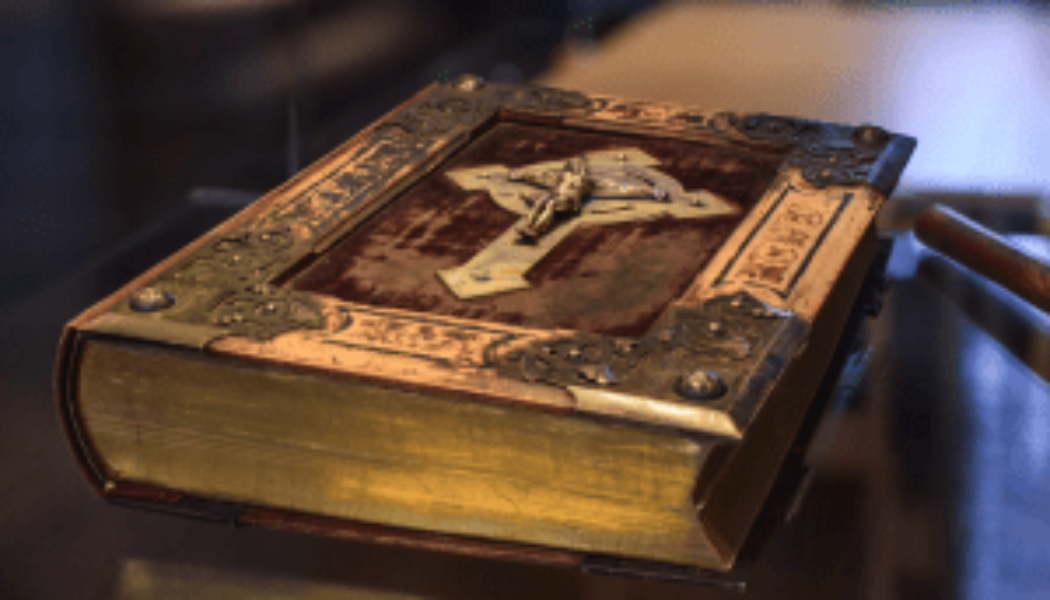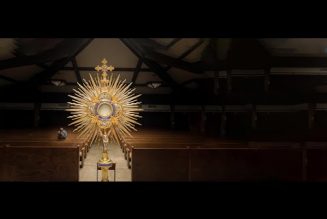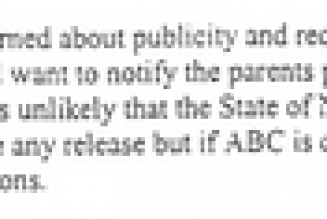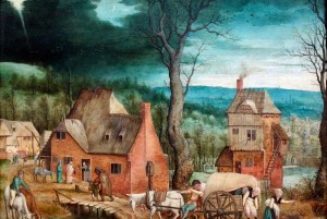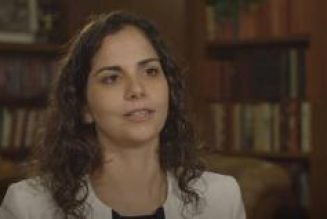Despite the multitude of Christian denominations that have sprung up over the last 500 years, there seem to have been few, if any, important divisions among Christians about the authenticity of the canon of the New Testament since the Catholic Church promulgated it at the Council of Rome more than 1,600 years ago.
I. The Genesis of this Topic
 St. John Henry Newman, the great 19th century English churchman, scholar and convert to Catholicism, famously once said, “To be deep in history is to cease to be Protestant.”[1] That seems like a fitting way to begin because the genesis of this essay was my hearing a Catholic convert quote the New Testament passages he references when explaining to his Protestant family and friends why he became Catholic.[2] I noticed that in the dialogue he described, all parties acknowledged the authoritativeness of the Bible as the inspired Word of God. Given this common ground, it occurred to me that the more fundamental questions at issue were: 1) Where did the Bible itself come from? 2) How was it put together? And 3) who decided which books made it into the original group that came to be known as the canon of the Christian Bible?
St. John Henry Newman, the great 19th century English churchman, scholar and convert to Catholicism, famously once said, “To be deep in history is to cease to be Protestant.”[1] That seems like a fitting way to begin because the genesis of this essay was my hearing a Catholic convert quote the New Testament passages he references when explaining to his Protestant family and friends why he became Catholic.[2] I noticed that in the dialogue he described, all parties acknowledged the authoritativeness of the Bible as the inspired Word of God. Given this common ground, it occurred to me that the more fundamental questions at issue were: 1) Where did the Bible itself come from? 2) How was it put together? And 3) who decided which books made it into the original group that came to be known as the canon of the Christian Bible?
II. The Nature of the Topic: Historical as well as Theological
From a Christian theological standpoint, the perspective of faith, the answer to those questions is rather simple: the Bible was inspired by the Holy Spirit, the third person of the Trinity. Thus, it came from God, right? In other words, it was God who not only guided and inspired the human authors but ultimately decided what books made it in. If one accepts that premise, then the main question becomes How? Was the Bible handed to someone by an angel at some point a long time ago? No, at least that’s not what we Catholics believe. So, historically, when, how, and by whom was the Christian Bible – that is, the books of the Old and New Testament – collected in one tome and definitively promulgated in the general form we know today? In this essay I will seek to answer these questions by tracing the key moments in the development of the Christian biblical canon and evaluating the plausibility of differing views on it, based primarily on the historical evidence currently available to us.
III. The Easy Answer: 7 Affirmations from the Council of Rome to the Council of Trent
As with so many things in life and in history, there is an easy answer and a more complex answer to the questions posed above. The easy answer is that the canonical books of the Christian Bible were enumerated and approved by various councils, synods, and popes of the Catholic Church, beginning with the Council of Rome in 382 A.D. Presided over by Pope Damasus I, the Council of Rome first promulgated what we came to know as the canon of the Christian Bible in a document called The Decree of the Council of Rome on the Canon of Scripture. The second part of this decree, which gives a complete list of the canonical books of both the Old and the New Testament, is referred to as the “Damasine List.” Just more than a decade later in 393 A.D. a council of bishops, including St. Augustine of Hippo, affirmed the same canon of Scripture at the Synod of Hippo. The Synod of Carthage (397 A.D.) and the Council of Carthage (419 A.D.)[3] reaffirmed the canon of the Bible given at the Synod of Hippo. Then at some point during the pontificate of Gelasius I (492 – 496), he is believed to have issued “The Gelasian Decree,” which again listed the very same canon of Scripture as the synods and councils of Carthage, Hippo, and Rome. His decree also identified a catalogue of apocryphal books, which were to be rejected.[4] Listing those is also a tradition that goes back to Damasus I. More than 900 years later, in 1442 the Council of Florence once again reaffirmed the 73 books of the Canon of Scripture.[5] Then, finally, about a century later in 1546 the Council of Trent declared the same list of 73 books to be the complete and authoritative canon of Sacred Scripture and issued an anathema, or a formal condemnation, on any dissenters.[6] So, between the Council of Rome (382) and the Council of Trent (1546) there were at least seven consistent affirmations by the Church of the same list of 73 books – 46 in the Old Testament and 27 in the New Testament – that constituted the canon of the Christian Bible.
IV. How the Church Arrived at the Canon
There is a longer, more complex answer to how we arrived at the canon of Scripture which requires further explanation. After all, there were roughly 350 years between the end of Jesus’ earthly ministry and the Council of Rome; and all 27 of the canonical books of the New Testament were written in the 1st century A.D. What was going on in the more than 250-year interim? One noteworthy thing that took place during this period is that gospels, acts, and epistles that would come to be considered apocrypha were written. Apocrypha comes from the Greek word, apokryphos, meaning obscure or hidden, and is used to describe those books that were not considered by the Church to be divinely inspired and therefore were not included in the canon. Most of them were written in the second and third centuries A.D. by anonymous authors. However, at least two apocryphal books, the Acts of Barnabas and the Acts of Peter and Paul, are believed to have been written as late as the 5th century.[7]
The earliest known attempt to define and produce copies of the Christian Bible was probably during this 350-year interim period prior to the Council of Rome. In 331, after moving to Byzantium a year earlier and renaming it Constantinople,[8] the first Christian Emperor of the Roman Empire, Constantine I, commissioned a bishop, Eusebius of Caesarea, to produce fifty copies of Sacred Scripture in Greek.[9] The oldest extant copies of the Christian Bible, the Codex Vaticanus[10] and the Codex Sinaiticus[11] have been dated to the fourth century. Scholars believe they were probably among the fifty Bibles originally commissioned by Constantine, although it is disputed whether Sinaiticus was actually delivered to Constantinople.[12] It is worth noting that The Codex Vaticanus is missing 1-4 Maccabees and the Prayer of Manasseh in its Old Testament and lacks 1 and 2 Timothy, Titus, Philemon, and Revelation in its New Testament. Large portions of the Old Testament are missing from the Codex Sinaiticus, but scholars assume that these parts simply did not survive. Not only did the complete New Testament survive in the Codex Sinaiticus, but it also includes the Epistle of Barnabas and The Shepherd of Hermas, which are generally considered apocrypha.
Another bishop, Athanasius of Alexandria, also wrote of receiving a request from Constantine to produce manuscripts of Sacred Scripture,[13] which probably occurred between 337 and 339 A.D.[14] Athanasius is especially noteworthy because in his Festal Letter to the Egyptian Churches and monasteries in 367 he enumerated the Scriptures of both the Old Testament and the New Testament exactly as they are listed in the canon promulgated fifteen years later at the Council of Rome and affirmed at all of the succeeding councils, including Trent. St. Athanasius, who was given the title “One of the Four Greek Fathers” and was eventually declared a Doctor of the Church in the West, had died in 373, nine years before the Council of Rome. But within a few years of his death he was so respected and venerated for his courageous defense of trinitarian Christianity against Arianism that it does not seem at all out of the question, but rather likely, that Athanasius’ list had a significant influence on the definitive canon of Scripture promulgated at the Council of Rome and reaffirmed thereafter.[15]
V. Challenges to and Variations on the Canon
I have to admit that when I first took an interest in this topic I assumed that the most furtive controversies would probably be related to debates about which books to include in the New Testament. After all, the New Testament is the part of the Bible that is new, or at least newer. Therefore, it seemed to me that the canon of the Old Testament must have been already well-established and settled by the time the New Testament came along. However, as I researched the development of the canon of Scripture, perhaps the most surprising thing that I discovered is that the most hotly debated and divisive questions regarding the canon of the Bible have been related to the part that we Christians refer to as the Old Testament.
Jewish
Soon after the time of Jesus a controversy arose among the Jews over the canonicity of the most recently written books of the Hebrew Scriptures. In the time of Jesus the most widely used version of the Hebrew Scriptures was what has come to be known as the Septuagint. Ironically, this was a 2nd and 3rd century B.C. Koine Greek translation of the Hebrew Bible. The seven most recently written books of the Septuagint are known as the deuterocanonical books. They are called deuterocanonical, meaning second canon, to distinguish them from the older books of the Hebrew canon that are termed protocanonical.
According to tradition, the Septuagint was written when Ptolemy II Philadelphus, the Greek king of Egypt, at the behest of the chief librarian of the great ancient Library of Alexandria, asked the Jews to translate the Hebrew Scriptures into Greek so that their knowledge could be added to the Library of Alexandria. In response to the king’s request, the high priest of Jerusalem chose six elders from each of the twelve tribes of Israel, and those seventy-two scholars went to Alexandria and supposedly spent seventy-two days translating the Hebrew Scriptures into Greek. The king, who requested copies, as well as the Jews of Alexandria, were very pleased with the work that the seventy-two Jewish scholars produced.[16] The Septuagint became the most widely read and used version of the Hebrew Scriptures up to the time of Jesus and the Apostles because at that time Greek was a commonly used language, whereas most Jews could not read Hebrew. This, along with textual evidence in the New Testament, leads us to the conclusion that the Septuagint is probably the version of Scripture that Jesus and the Apostles read, referred to, and quoted.
There is no scholarly consensus as to when the current canon of Hebrew Scripture (or Tanakh), which does not contain the deuterocanonical books, was definitively established. In the late 19th century and through most of the 20th century the prevailing view was that the Jews made the decision to remove the deuterocanonical books from their canon at the Council of Jamnia (70-90 A.D.), which they had held in the late first century specifically to finalize the canon of Hebrew Scripture.[17] Over the last 50 years, however, that theory has been questioned and largely discredited. Canonicity was discussed at Jamnia, but it does not seem to have been definitively established. There are some who argue that the Hebrew canon was established even before the time of Christ during the Hasmonean Dynasty (140-40 B.C.).[18] But it seems that the earliest explicit enumeration of a Hebrew canonical list is by an important Jewish historian named Josephus (c. A.D. 37 – c. 100). He refers to a tripartite division of twenty-two books of Hebrew Scripture: 1) the Torah, which was five books, 2) the Nevi’im, or “prophets.” which was thirteen books, and 3) four other books of hymns and wisdom, called Ketuvim, or “writings.” The most recent candidate for establishing the final Hebrew canon is the Masoretic Text. In Rabbinic Judaism this text defines the Jewish canon and the precise Hebrew and Aramaic letter-text of the twenty-four books of the Hebrew Bible recognized today. The Mesoretes copied, edited, and distributed that text between the 7th and 10th centuries A.D.
The most important point to note regarding the final list of the canonical books of the Hebrew Bible is that by the 10th century at the latest they do not include the seven deuterocanonical books found in the Septuagint. The 24 books ultimately recognized as the canon of the Hebrew Bible correspond only to the 39 protocanonical books within the 46 books that we call the Septuagint. Although a desire by rabbis to distinguish the Jewish tradition from the emerging tradition of Christianity seems to have been a factor, the most commonly cited explanation for this omission is that Jewish scholars believed that the deuterocanonical books, having been authored during the Hellenic period of the Jewish people, was not originally written in Hebrew, the holy language of Scripture, but in Greek. However, the discovery of the Dead Sea Scrolls in 1946 turned this assumption on its head, since it contains Hebrew texts of at least a portion of every book contained in the Septuagint, including the deuterocanonical books. In fact, according to a 2014 article in the Biblical Archaeology Review by Emanuel Tov, a scholar at the Hebrew University of Jerusalem, “Some of these Hebrew [Dead Sea Scroll] texts have more in common with the Greek Septuagint than with the traditional Hebrew [Masoretic] text.”[19]
Protestant
Interestingly, despite Jesus’ and the Apostles’ recognition and use of the full Septuagint and more than 1,500 years of acceptance by Christians, early Protestants and their successors have opted to follow the generally post-Christian Jewish tradition of denying the canonicity and divine inspiration of the deuterocanonical books, viewing them as apocrypha. Although two of the earliest German Language Luther Bibles (1522 and 1534) included these books, they were placed in a separate section after the Old Testament, which became a precedent for Protestant Bibles. Consistent with Luther’s view, in his 1534 Bible this section was entitled “Apocrypha” and preceded by the disclaimer, “These Books Are Not Held Equal to the Scriptures, but Are Useful and Good to Read.”[20] Likewise, the first complete Modern English translation of the Bible by Miles Coverdale in 1535 included the deuterocanonical books but considered them Apocrypha and therefore placed them in a separate section after the Old Testament. Some other early English Protestant Bibles, such as Matthew’s Bible (1537), Great Bible (1539), Geneva Bible (1560), Bishop’s Bible (1568), and the King James Version (1611), similarly included separate sections for 1) the Old Testament, 2) the “Apocrypha”, and 3) the New Testament and carried a statement to the effect that the Apocrypha were non-canonical but useful for reading. Notably, there were certain editions of the Great Bible, Bishop’s Bible, and the Geneva Bible that were printed without the “Apocrypha.” However, King James VI and I, the sponsor of the Authorized King James Version (1611) threatened with heavy fines and a year in jail anyone who would print the Bible without Apocrypha. This tradition of including the deuterocanonical Apocrypha in English Protestant Bibles lasted until the early 1800’s, when they were removed altogether.[21]
Eastern Orthodox: Additions and Distinctions
The Eastern Orthodox Church, the Oriental Orthodox Churches, and the Assyrian Church of the East, on the other hand, take the Catholic position and recognize the deuterocanonical books and passages as canonical books of the Old Testament. In fact, the Eastern Orthodox Church even adds several additional passages and books to the Septuagint: 1) the Prayer of Manasseh in Chronicles, 2) 1 Esdras, 3) 2 Esdras, 4) Psalm 151, 5) 3 Maccabees, and 6) 4 Maccabees as an appendix. These differences exist because, even though the New Testament canon had been universally agreed upon by the fourth century, there were minor variations in the Old Testament that persisted through the Great Schism of 1054 between East and West. It is also worth noting that the Eastern Orthodox do not consider these additions to be significant because they “do not hold the same legalism as we do in the West when it comes to [divine] inspiration and canonical status.”[22] In the Eastern Orthodox tradition, canonical simply means that something is acceptable to be read in liturgy. According to this tradition, there are some Biblical texts that are considered divinely inspired but are not read from at divine liturgy and therefore are not considered canonical. So, in the East there is a distinction between canonical and divinely inspired that does not exist in the West.[23]
VI. Conclusion
The question of who originally decided what made it into the canon of the Christion Bible is on its face a fairly simple one, especially for Catholics: it was the magisterium of the Church through several councils and with the approval of several popes. To be sure, over the past two millennia some controversial issues have been raised with respect to the original Christian canon. However, after taking the time to evaluate them, it turns out that the most significant variation on the Christian canon arose out of a controversy regarding the Old Testament, that is, whether or not it should include the full Jewish Septuagint. However, twentieth century archaeological finds have largely undermined the basis for that dispute, arguing strongly for the Septuagint’s full inclusion in the canon. Most significantly and surprisingly, given the multitude of Christian denominations that have sprung up over the last 500 years, there seem to have been few, if any, important divisions among Christians about the authenticity of the canon of the New Testament since the Catholic Church promulgated it at the Council of Rome more than 1,600 years ago. Thus, in addition to the passages from the biblical canon that Catholics point to in support of the Church’s claim to God-given authority, the weight of the historical evidence underscores how problematic it is to attribute divine authority to the canonical books of the Christian Bible without also attributing some God-given authority to the institutional Church that played such an integral role in selecting them.
This essay was first published here in April 2023.
The Imaginative Conservative applies the principle of appreciation to the discussion of culture and politics—we approach dialogue with magnanimity rather than with mere civility. Will you help us remain a refreshing oasis in the increasingly contentious arena of modern discourse? Please consider donating now.
Notes:
[1] Newman, John Henry, An Essay on the Development of Christian Doctrine, 1878, Part 1, Introduction, Sect. 5
[2] i.e., Jesus’ founding of His Church (“…[Y]ou are Peter, and on this rock I will build my Church, and the gates of hell shall not prevail against it.”) and granting divine authority to Peter (“…[W]hatever you bind on earth shall be bound in heaven, and whatever you loose on earth shall be loosed in heaven.”) Matthew 16:18-19; and Jesus thrice reaffirming Simon Peter’s role as shepherd of His flock, or the first Pope (“Simon, Son of John, do you love me? …Yes, Lord… Feed my sheep.”). John 21:15-17
[3] Canon 24 of the Council of Carthage
[5] Heschmeyer, Joe, “The Council of Florence on the Pope, the Church, and the Bible,” October 27, 2013.
[6] Decree Concerning the Canonical Scriptures, The Council of Trent, Session IV.
[7] Ehrman, Bart D.; Pleše, Zlatko (2011). “The Jewish Christian Gospels”. The Apocryphal Gospels: Texts and Translations. Oxford University Press. pp. 197–216.
[8] Constantine renamed Byzantium Constantinople on May 11, 330 A.D. (Mango, Cyril, “Constantinople”. In Kazhdan, Alexander [ed.]. The Oxford Dictionary of Byzantium. Oxford and New York: Oxford University Press, 1991, pp. 508–512)
[9] Eusebius of Caesarea, Life of Constantine, 4th century A.D., Bk 4, Ch. 36
[10] So named because it has been housed in the Vatican Library since it was discovered in the 15th century. (Cross, Frank Leslie and Livingstone, Elizabeth A. The Oxford Dictionary of the Christian Church. Oxford, England: Oxford University Press, 2005, p. 375)
[11] The largest part of the Codex Sinaiticus has been housed in the British Library since its discovery in 1844. The remaining parts are held at Leipzig University Library in Germany, the National Library of Russia in St Petersburg, and St Catherine’s Monastery in Sinai.
[12] Skeat, Teodor Cressy, “The Codex Sinaiticus, The Codex Vaticanus and Constantine,” Journal of Theological Studies 50, 1999, pp. 583–625.
[13] Athanasius of Alexandria, Apologia ad Constantium, 4th century A.D., Chapt. 4.
[14] Elliott, T.G., The Christianity of Constantine the Great, Scranton: University of Scranton Press, 1997.
[15] Chapman, John, Doctors of the Church. In Herbermann, Charles (ed.), Catholic Encyclopedia, Vol. 5, New York: Robert Appleton Company, 1909.
[16] Aristeas of Marmora, Letter to Philocrates, 2nd century B.C.
[17] Graetz, Heinrich, Kohelet, Oder, Der salmonische Prediger, Leipzig: HardPress Publishing, 1871.
[18] McDonald, Lee Martin and Sanders, James A., (eds.) The Canon Debate, Peabody, MA: Hendrickson Publishers, 2002, p. 5.
[19] Emanuel, “Searching for the ‘Original’ Bible,” Biblical Archaeology Review 40.4 July/August, 2014
[20] Brecht, Martin, Martin Luther, Minneapolis: Augsburg Fortress Publishers, Vol. 3, 1985-1993, p. 98.
[21] Daniell, David, The Bible in English, New Haven, CT: Yale University Press 2003, p. 187.
[22] Grondin, Fr. Charles, “Do Catholics and Orthodox Have the Same Bible?”
[23] Grondin.
The featured image is courtesy of Pixabay.
